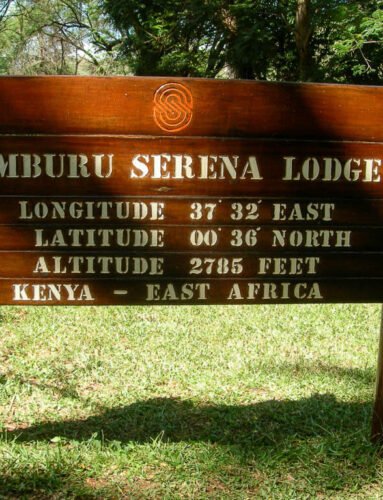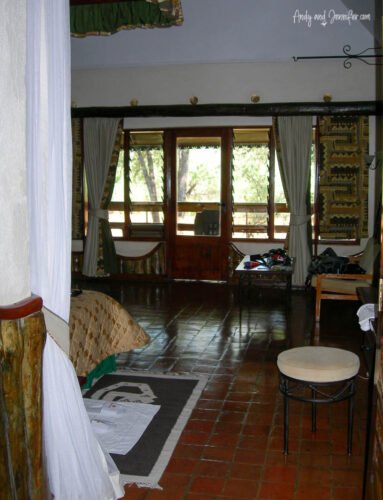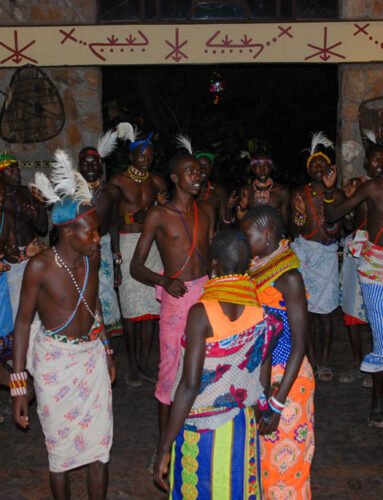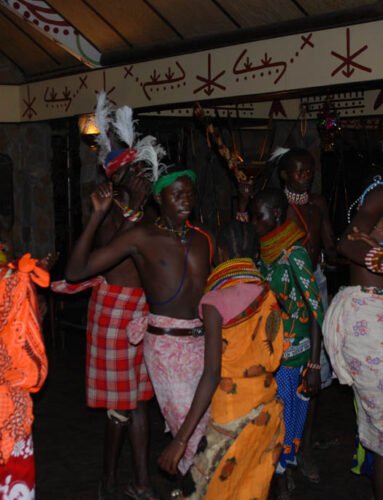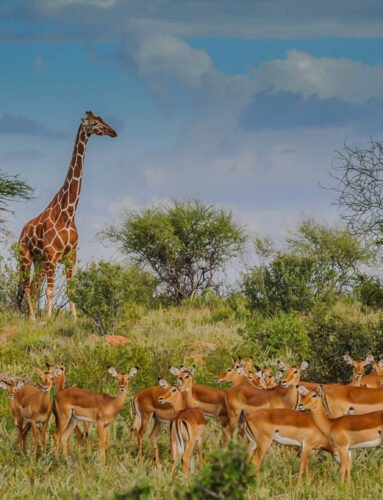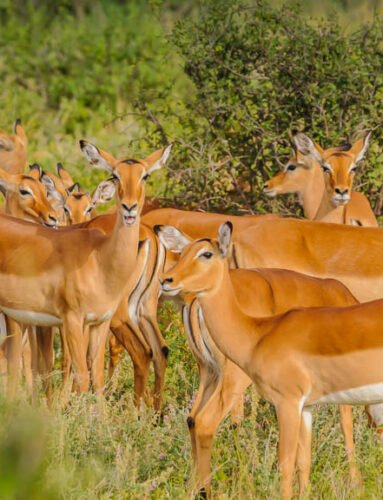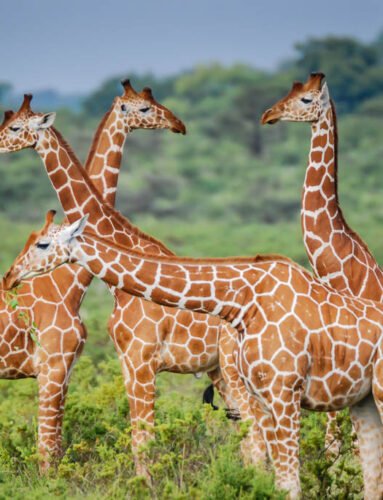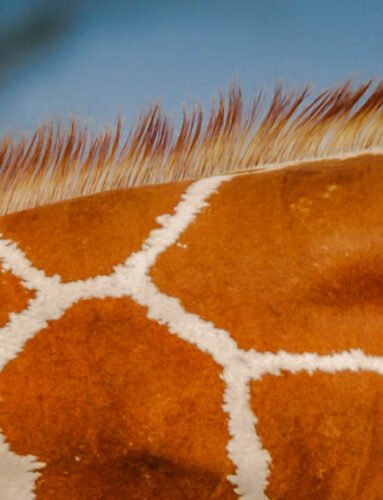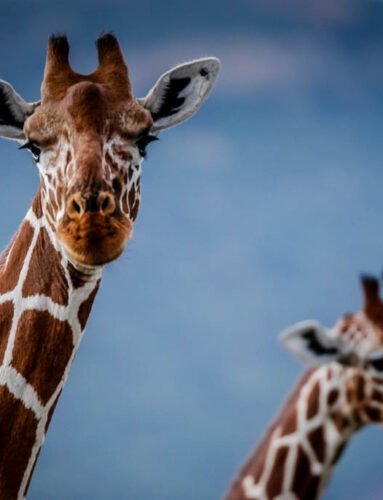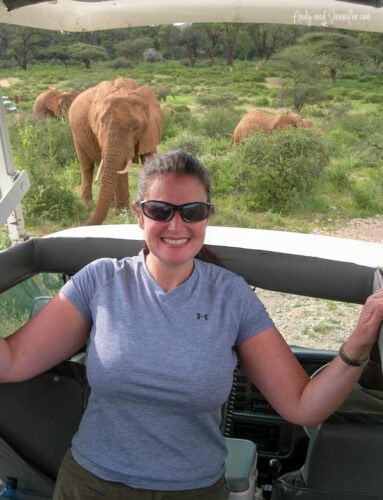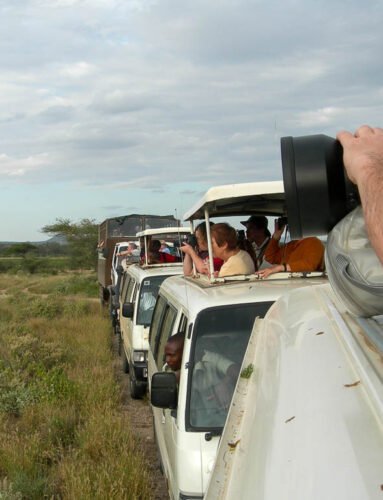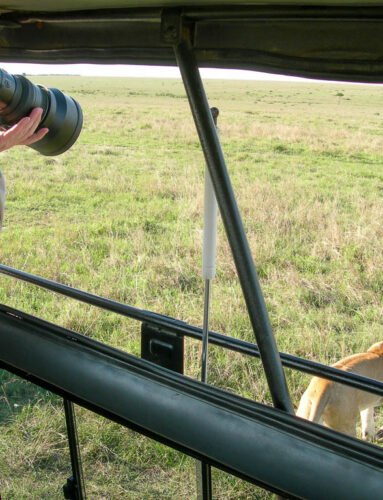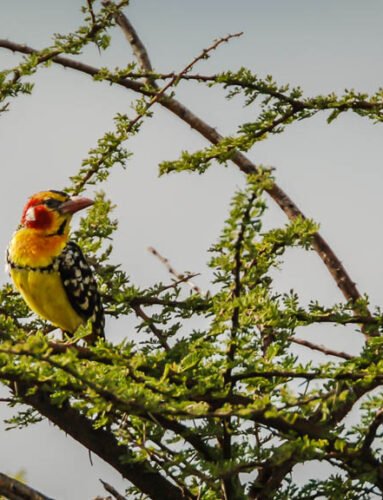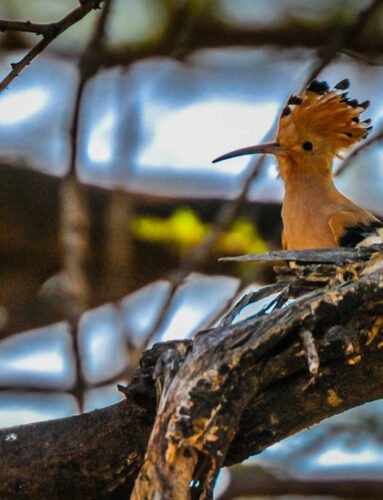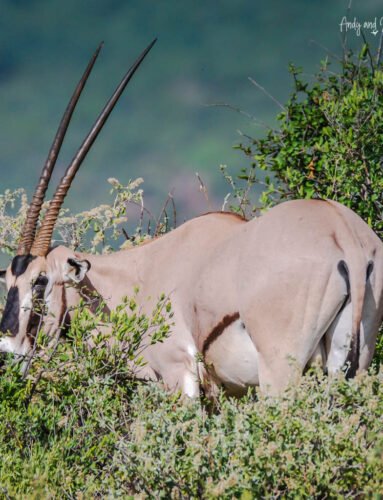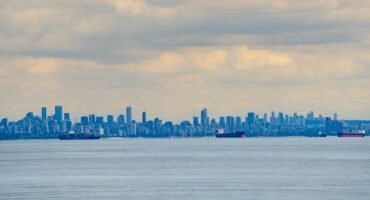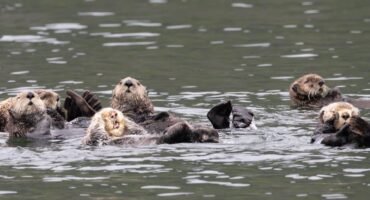
Samburu
Getting There
After a typical Serena breakfast (my favorite African meal of the day) we left Sweetwaters around 8:30. We passed through some villages – many shops selling hides & skins, butcheries prominently displaying their meat, mobile charging stations, and lots and lots of flower plantations. Mt Kenya loomed to our right the entire time, and then the landscape changed dramatically. It became more arid and the temperature rose about 10 degrees.
We stopped at the obligatory curio shop where I tried to go to the bathroom but changed my mind after seeing the facilities.
Matthew warned us that the rest of the road would be dusty and bumpy and his description was spot on. We saw many people walking with camels, lots of Muslims and women covered in dark clothing from head to toe. We stopped at the park entrance where aggressive people tried to sell us their wares: bracelets, necklaces, and a variety of sizes of knives. When it was clear we weren’t going to buy they just broke down into “where are you from and what did you bring me.”

The Samburu Serena
Once in the park, we had a pleasant game drive en route to the lodge and saw ostrich, camels, gerenuk, zebra, impala, and colobus monkeys. We arrived at the Samburu Serena at noon and were greeted with cold towels and orange and watermelon juice. Our room, #15, was 4 or 5 buildings down from the main area and on the 2nd floor so it had a nice view of the Uaso Nyiro river. From the terrace, we saw crocodiles, baboons, colobus monkeys, and even elephants!
The pool area was quite nice (though I somehow did not get a photo of it). The lodge had several resident troupes of monkeys and baboons and employed a Samburu man with a slingshot to keep them under control. He would stand on guard at the pool and in the dining room during meals, and the rest of the day the mischievous primates kept him busy getting into the garbage cans positioned along the walkways.

For Christmas the lodge served dinner an elaborate dinner by the pool and arranged an evening of local entertainment which featured a Samburu dance troupe, a children’s community choir, and the elephant dance as a grand finale.
Game Drives
Game drives here followed the typical schedule (one leaving around 6:30am and one leaving around 4pm). We’d either stay on the Buffalo Springs side or go over to the Samburu Reserve side. The entrance to Samburu features a mural of the famous oryx-adopting lioness.
The area is known for the “Samburu 5”, animals unique to this region: Oryx, Grevy’s Zebra, Reticulated Giraffe, Gerenuk, and Ostrich.
Typical game drives included baboons, Colobus monkeys, secretary birds, Egyptian goose, Marabou stork, impala, gazelle, waterbuck, oryx, herds and herds and herds of elephants, dozens of giraffe, African hoopoe bird, cheetah, lion, dik-dik, rock hyrax, bee-eaters, superb starlings, whydah bird, and cape buffalo. Two unique things we saw was a troupe of baboons eating a rabbit, and an ODIFOROUS dead elephant surrounded by a flock of vultures (and when we went by the next time it was surrounded by a pride of lions).
Animals here looked the healthiest/cleanest we’ve seen – full shiny coats, no sores, no visible ribs, and no bugs.
Next stop, the Masai Mara.
We’re Andy and Jennifer—two former corporate executives who chose long ago to prioritise experiences over stuff while pursuing our passions for travel and photography. From the Arctic to Antarctica, and most places in between, we’ve captured the world through our lenses and love sharing those stories. Our careers gave us the means, but our purpose is inspiring others to explore and helping people create images they’re proud of.

